Love Celtic/Gaelic Folklore
Love celtic/Gaelic folklore
Faerie List
Alvens: These are Water faeries who float around on bubbles and hate fish. During a full moon, they come on land to dance and play. They are not particularly friendly.
Amadan Dubh: This is a particularly dangerous type of faery that is greatly feared among the Gaels. They are known as the “fairy fools,” and the bringers of madness and oblivion. They play faery enchantments on their reed pipes on hilly slopes and precipices after sunset.
Banshee: The name “banshee” means a woman of the faery. It corresponds to the “Fear Sidhe” or faery man. The wild banshee wanders through the woods and over the moors at dusk, and some- times lures travelers to their death. Banshee can also travel at will to great distances. Appearing in tattered gray clothes, they are basically a sociable faeries who have become solitary through sadness and grief. They are the honor- able ancestral faery women of the old clans of Ireland, who are heard, but rarely seen. They wail a blood-curdling lament just before mis- fortune, illness, or death occurs in their ancestral families. Their wail can kill or instantly age mortals who hear it. Banshee also avenge the death of their descendants. They generally appear either as beautiful maidens or gruesome crones. Salt water and silver can harm them.
Bendith Y Mamau: They have the ill disposition and ugly appearance of goblins, but the glamour of the faeries. Living in underground caverns, they don’t care very much for mortals and they have been know to steal cattle and children, to kill farm animals, and to break important tools.
Billy Blin: A household familiar who is popularized in English and Scottish songs.
Boggart: They are known for breaking things and making trouble, but seldom do serious harm. Most old homes have a boggart. The supernatural boggart is sly, annoying, mischievous, and a prankster. They pull the covers from sleeping mortals, rap or pound on the door at odd times, or rearrange the furniture at night when you are sleeping.
Brownie: They are from 1 to 2 ft. tall and are scattered throughout the highlands and lowlands of Scotland as well as the northern counties of England. They have brown, wizened faces and hair growing all over their body, so they don’t need to wear clothes (although sometimes they are seen wearing brown cloaks with hoods). As household faeries, they do unfinished jobs such as mowing, threshing, caring for the laying hens, and tending the sheep and cattle. They bring good luck to a family, providing that the family treats the brownie well. Brownies also love animals and will take care of the household pets. They adore gifts of food and drink such as milk and honey cakes, but abhor gifts and wages. Urisks are the Scottish version of brownies.
Buccas: Residing in Cornwall, they are magickal beings that inhabit mines. Also called tinmine demons, they are the wind goblins that foretell shipwrecks.
Bwca: This is a sort of Welsh version of a brownie, but a more particular one. They can be great help around the house, but if offended they can become harmful, throwing things around the house, spoiling the milk, and ruining the beer.
Callicantzaroi: Naked, they ride about on chickens. They live in troops and are zealous in their celebrations of Yule.
Clim: A mischievous goblin that resides in chimneys and peeks out at children, scolding them when they are bad.
Clurichaun: Residing in southwest Ireland, they are renowned drunkards who both guard and raid wine cellars. The Clurichaun sing in Gaelic and have beautiful, magickal voices.
Coomlaen: These “elven steeds” appear as tall, thin, white or silvery horses who live in the forest and are always in the company of elves. As shapeshifters, the coomlaen can take the shape of their de- sires, but must return to the shape of a horse once during each day for at least six hours. They are fiercely devoted to one rider at a time and the bond lasts for the lifetime of the rider. The two communicate telepathically. Because the Coomlaen defends its rider, in order to befriend a coomlaen you must first befriend its rider. Coomlaens adore gifts of apples and honeysuckle. Iron is harmful to the coomlaen.
Cooshie: Also known as the “elfin hound,” they live in the forest and appear as large, silver-furred wolves that move quickly with the grace of a large cat. The cooshie stay with their elfin masters, and have heightened senses, including knowing when there is any magickal, spiritual, or physical presence in their territory. Like elves and coomlaens, they have an aversion to iron. Cooshies can heal sick or injured travelers and calm troubled minds and hearts.
Corrigans: From Brittany and Cornwall, they live in the woods, near streams. Corrigans are winged faeries who like to play pranks, such as taking human babies and replacing them with changelings.
Daoine Sidhe: The immortal polytheistic group of goddesses and gods of Pagan Ireland who merged with the land, these are the cream of the crop of faeries that form a faery nation. They appear in human form, dressed in green, and are called the peaceful faeries. They preside over the faery kingdom, play sweet music, dance, ride milk-white faery horses, and are generally accompanied by their faery hounds.
Dryad: They are happy, friendly, and playful wood nymphs who live in and take care of the trees. They are born of the same seed as the place they live. Dryads are the color of tree bark or leaves and their dark green hair is extremely long and flows about them. They can disappear by stepping into a tree, as if stepping into a dimensional door. Sometimes their skin is dappled like a tree trunk. Dryads are usually very charm- ing, sing beautifully, and particularly like willow and oak trees. Damaging a dryad’s tree harms the dryad as well, but the dryad can defend its tree by creating storms and lightning.
Dwarfs: Both male and female, dwarfs are usually from 3 to 5 ft. tall, with broad shoulders, large muscles, long arms, stumpy legs, and lots of facial hair. They are quick tempered, loyal, and immune to physical damage. Working with Earth, Fire, and stone, they are found underground under moun- tains and hills where they mine metals and gems, especially copper. Their craftsmanship is unmatched in the mortal world. They adore gifts of both precious metals and gems.
Eash Uisge: They are the Highland water horses known for being fierce and dangerous. They have the ability to shift into the shape of young, hand- some men.
Elves: According to Norse mythology, elves and dwarves are created in the time before humans from the body of Ymir, the giant. Inhabiting one of the upper worlds, and often found in Natural settings such as woodlands and forests, elves are somewhere between mortal and divine. Originally between 5 and 7 ft. tall, they were thin, strong, flexible, and quick. Their hair was usually red, blond, or light brown, and they had cat-like ears. Their cat-like eyes are green, blue, silver, or gold with slitted pupils. Through time, the elves became Elemental spirits of the land, sea, and forest, who are sometimes por- trayed as small, good-natured creatures with brown skin and delicate features. Iron does not kill elves, but it can injure them. They adore gifts of quartz crystal, pearl, moonstone, and silver. In the Western world, Santa Claus and his helpers are elves.
Ferrishyn: The Manx name for the faeries, also known as the “sleigh beggey.”
Fir Dearg: Also known as the “fear darrig” or the “red men,” they are a mischievous, rare breed of faery, who dress in red and have red hair. Their only interest seems to revolve around playing practical jokes on humans.
Ganconer (Gean-canogh): Also known as a love faery, the ganconer is a leprechaun-type faery who appears as an incredibly handsome young male. Called the “lover-talker,” he spends most of his time seducing milkmaids and shepherdesses. Appearing in lonely valleys and fields, they are known for playing beautiful songs on their pipes, but their fate is ultimately to be alone.
Gnomes: They are elderly dwarf people who stand from 1 to 2 ft. tall, and like dwarfs, live under- ground except for the few times when they come up to roam in the deep forest. Male gnomes grow long beards. Gnomes live under old oak trees in heavily forested areas, and like gifts of beautiful stones.
Gray Elves: Not choosing to associate with any other magickal beings, they live in isolated meadow- land. Gray elves have either silver hair and amber eyes, or pale, golden hair and violet eyes. They are very intelligent and extremely rare.
Gwartheg Y Llyn: The Welsh name for faery cattle, said to be usually milk-white in color. A farmer who gained the favor of this magickal cow was said to be richly rewarded, but the farmer who tried to lift a hand to hurt the animal would find misfortune would come to the farmer.
Gwradedd Annwn: The Welsh name for the “lake maidens,” they are beautiful and desirable, but are not like sirens and nixies. They are known for marry- ing mortals much like the Silkee or “seal maidens.”
Hobgoblins: They are the English cousins to the Scottish brownie and Welsh bwca. A house faery, a hobgoblin’s favorite place is behind the kitchen fire, once known as a “hob.” Once settled, they rarely leave the house, and when feeling ne- glected, they are known to hide keys in the most unlikely places. They are vulnerable to iron and gold. In folklore and literature, both Robin Goodfellow and Puck are hobgoblins.
Knockers: In Cornwall, they are generally helpful mine sprites that are particularly attracted to rich veins of ore. Miners of old were said to follow the sound of the knockers’ tools pounding the rocks to find a strike. Knockers are also known to warn against cave-ins and floods, and as such, the miners always leave them gifts of food and drink. In Wales, knockers are known as “coblynau.”
Kobold: The German name for the “little people,” originally they were tree sprites who were captured and brought home in wooden boxes. The per- son who captured the kobold could open up the box and the kobold would do things for her or him. But if anyone else opened the box, the kobold would take revenge for being confined. They formed the basis for the original jack-in- the-box for children. They are old men the size of small children who wear pointed hoods or caps and green clothing. Loud noises and strong winds scare them. For gifts of food and milk left out at night, they will do any little job around the house and barn, such as washing the dishes, preparing meals, sweeping the floor, making the fire, or tending the farm animals. Kobolds also have the ability to cast binding spells and will go to great efforts to protect the members of the household. If mistreated, they can become truly nasty.
Leanhaun (Leanan) Sidhe: They are the faery mistresses or sweethearts of Scotland and Ireland. They crave love, and try to gain power over their lovers, treating them like slaves and draining all the life out of them before moving on to new lovers. Said to be an inspiration to poets and musicians, these magickal faeries act as sort of muses, giving the artist’s work an otherworldly quality.
Leprechauns: They usually manage to trick their way out of surrendering their gold. Only a select few get away with a leprechaun’s riches. Solitary faeries of Ireland, witty, fascinated with gold, they can pass by as a swirl of dust, knocking off your hat. They are generally 2 to 3 ft. tall, with wizened faces, bright eyes, and red noses. They dress mainly in greens and browns, and are known for their excellent shoe-making skills.
Lorilei: A solitary faery, who is beautiful and bewitching, she is known for lounging on rocky heights while singing a song of enchantment.
Lunantishee: They guard the blackthorn bushes particularly on Samhain and Beltane. If you cut a stick from the bush on either one of those days, you will suffer misfortune.
Mermaids/Merrows: They live in the airy palaces be- neath the waves. They wear red-feathered caps to swim from their underwater world to ours. If a mortal steals the cap, the merrow can’t get back home. The females are beautiful, the males are ugly with green faces and red pig noses. Both have fish tails and webbed fingers. Taking mortal lovers, their offspring are covered with scales.
Muryans: Cornish faeries, the word “muryan” means “ant.” These are faeries the size of ants, who are shapeshifters. Every time they shift shape, they get smaller, eventually getting so small, they disappear from sight.
Nixie: They are Water sprites that inhabit lakes and seldom venture onto land. Their houses are made from seaweed and are guarded by giant fish. They are known for charm spells that convince humans to do their bidding.
Nymphs: Nature spirits who evolved into faeries, they live in clear lakes, streams, and crystalline caverns. Intelligent and beautiful, they do not like intrusion, but will be friendly if approached by a good-hearted mortal. Nymphs have the power of prophecy and take mortal lovers. They are also said to be extremely hard to avoid once they have taken an interest in you, and can occasionally be dangerous if they become obsessed with you. Often traveling in pairs, nymphs are mobile, but they can also permanently align themselves with trees, rock outcroppings, mountains, rivers, and springs. They appear as young, extremely gorgeous women, who are frequently dancers, artists, and musicians. They are amorous and have insatiable sexual appetites. According to folklore, a nymph’s lifetime was the same as that of the phoenix, who outlived nine ravens, who out- lived three stags, who outlived four crows, who outlived nine generations of aged mortals.
Oakman: A wood faery who lives in oak trees, the oakman is a guardian of the animals. The familiar saying “faery folks are in old oaks” speaks of their kind. The oak is considered the tree of the dead and the abode of departed spirits. Oakmen resemble drawfs with red noses, wear red toadstool caps, and have an affinity with bluebells.
Pechs (Pehts): The name used for the faeries of the Scottish Lowland, Pechs are said to be like the feens of the Highlands and the trows of Shetland.
Phouka (Pooka): Originally deadly sea horses with glossy coats and metallic-like hooves, phoukas are now often viewed as wild, mischievous creatures who are related to the leprechaun. Phoukas can employ the shape of an animal in order to play wild pranks and kill mortals. In contrast, in some stories that are told about them, phoukas that are treated kindly are known as friendly beings that help farmers.
Piskies (Pixies, Pigsies): Found frequently in Cornwall, Devon, and Somerset, England, they stand 1 ft. high (or smaller), are slim, and wear green clothes and pointed red hats. They have blond hair and green eyes, pointed ears and chins, and turned- up noses. They can also levitate and move tiny objects from one place to another. Usually friendly, they can also be mischievous, and are known to steal horses and ride them around in circles, creating Faery Rings as they do.
Portunes: These are teeny tiny faeries that are about a finger’s length or less in size.
Redcaps: They live in castles and towers where evil deeds have been done so they can feed off the energy and create more of their own. They look like brownies, but wear caps made red by the blood of passing strangers at whom they have thrown stones.
Salamander: They are the powerful Spirit faeries of Fire because the salamander embodies the in- tuitive Element of Fire. Without the salamander, Fire would not exist. They come in all sizes and differ in appearance, but they are most often seen as being similar to a 1-ft. long lizard. They can grow larger or smaller at will. Sometimes they are seen as a ball of gold, orange, or red light. They are very devoted and quick to defend a friend. Working with the salamander helps you develop and strengthen your intuitive side.
Seelie: A good-hearted and benevolent group of faeries who glow as they ride the winds in search of humans needing help. The court of the kindly faery host is called the “Seelie Court.” “Seelie” means “blessed” in Gaelic. These benevolent faeries give gifts of bread and seed corn to the poor and pro- vide all kinds of help to their favorite mortals.
Sheoques: Appearing human-like, they live in ancient thorn bushes and faery forts that are surrounded by ditches. Also known for their bagpipe playing, they enchant and steal children, most times returning them unharmed and happy.
Shock: They appear as a horse, donkey, large dog, or calf. They are frightening and something to get away from if, by chance, you encounter one.
Sidhe: The word means “people of the faery mounds.” A distinction is often made between the “sidhe” who are seen walking on the ground after sunset, and the “Sluagh Sidhe,” the faery host who travel through the air at night and are known to abduct mortals. There are also guardian “sidhe” associated with the lakes of Ireland and Scotland. These distinct categories of “sidhe” beings tie in with the testimonies of seers who divide the “sidhe” into Wood spirits, Water spirits, and Air spirits, i.e., the Elemental spirits.
Sidhe Draoi: Gaelic for “faery druids,” folklore says that they took their name from the faery nymphs who taught them the magick of the trees. They are related to dryads.
Silkee: Usually found in seas and oceans, silkee first appear as seals, but become beautiful women when they shed their skin. They use their seal- skin to move from their world to this world. If their skin is taken from them, they can no longer move back and forth.
Sithich: Active Highland sprites known for being mischievous and having weapons that do their bid- ding, they are dexterous, child abductors, and intrude on women during childbirth. Their weapons are made of stone, shaped like a barbed arrowhead, and thrown with great force like a dart.
Sirens: They are Greek sea nymphs. The sirens’ enchantingly beautiful song entices sailors, leading them to their death.
Skillywidden: Small, young faeries who cannot shift their shape or alter their size.
Sleigh Beggey: The Manx name for the faeries.
Slievegallion: Known as the “hosts,” they are the spirits of mortals who have passed on into the otherworld. They fly about in great clouds, up and down the landscape. On clear, frosty nights they can be seen, and heard, fighting their battles in the air. They sometimes put mortals
Slyphs: under their spells to help fight their battles. Living for a thousand years without seeming to age, they are beautiful, changeable crea- tures that parallel nymphs, only they exist in the Element of Air. Living on the tops of high places such as mountains and cliffs, slyphs vary in size, are winged, transparent, elusive, and surrounded by a glowing radiance. For a very brief time, they can take on human form. They move by floating about with the wind, and as such, are known as the Spirit faeries of the Air. They inspire mortals, especially those individuals involved in the creative arts.
Spriggans: They guard the treasures of other faeries. Spriggans are ugly and dour, standing stone sprites that are said to have come over from Brittany where they are known as “korreds.” Folklore suggests that they brought the origi- nal standing stones to Cornwall. They can be seen around old ruins, standing stones, bar- rows, giants’ quoits and castles, and places where treasure is buried. They bring blight to crops, whirlwinds over crop fields, and storms. Spriggans are the ghosts of old giants, who appear small but can become gigantic at will.
Sprites: Very shy, delicate, and reclusive, sprites are winged spirits that dwell in meadows and wood- land glens. There are many types of sprites, depending upon their Element. Fire sprites are very rare. As William Shakespeare describes them in The Tempest, “Sprites are spirits: they do not have bodies as fairies do.” They adore gifts of nuts, acorns, and sweet treats, and love to be flattered by mortals.
Trolls: Originally supernatural beings in Scandinavian folklore, later they became huge ogres with great strength and little wit. Trolls are known for guarding castles and treasure, hunting in packs in the deep forest, and being deadly to mortals. They can outrun any mortal. Fire and sunlight will harm them. Never try to befriend one.
Trows: They are the Shetland Island version of trolls. They live in caves near the ocean or in sandy hillsides. Thought to be somewhere between dwarfs and giants, trows are dimwitted, un- friendly, and ugly. Sunlight turns them to stone or makes them explode. The Scottish Highland name for trows is Feens or Fians.
Undines: As Elemental Water spirits usually found within forest pools, waterfalls, marshlands, rivers, lakes, and riding the ocean waves, the beautiful voices of the undines can sometimes drift above the sound of the water. They inhabit underwater caves, river banks, and lake shores. They are able to influence the flow of water in streams, rivers, lakes, and oceans, as well as the plants that grow in and under the water. Undines can appear human-like and are generally shy, but friendly. Peaceful, graceful, and attractive, their skin shimmers blue-green, green, or aqua like the water. The undines are ruled by love and adore gifts of sweet-smelling perfumes.
Unseelies: They are dark, malevolent faeries, who have excessive pride, are unkind, and have malicious ways. In contrast to the seelie court, the unseelie court is one of the malevolent faeries, who are hostile and harmful. Stay away from them and do not engage them in any way.
Water Sprites: They are closer to the traditional concept of a mermaid, and are the marine counterparts of leprechauns.
Wight: A supernatural being or creature that is very hardy. Every tree has a wight who is its guardian. An old Scottish verse says, “If you call me blessed wight, I’ll be your friend both day and night.”
More Posts from Thegreenkeeper and Others
I love the use of light in these paintings, they're beautifully atmospheric.





Art by Michael Handt
I'm not sure if I should be amazed or worried by how far animatronics have come as far as realism goes. If they can make entertainment robots be so animated and move realistically, whose to say they haven't already made some for more "productive" purposes...

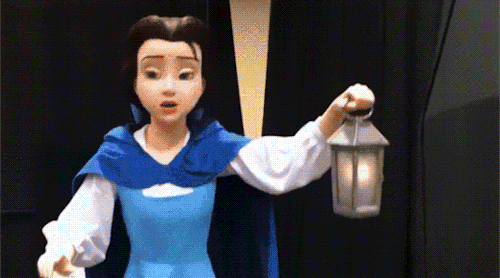
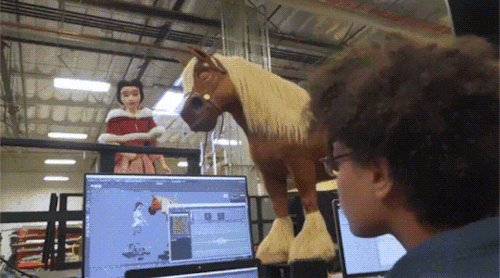
it took me like 3 minutes to process the fact that this wasnt cgi
I really want this book, I've got to have this book, I really need this book!...





Fun facts about the animal symbols behind the seven deadly sins.
The animals of the seven vices
I just wanted to talk a bit about how the seven deadly sins, or seven capital vices, were always associated with animals as symbols (which is quite ironic, given the vices are human in nature). In fact, it is quite funny to see that originally the idea of representing the vices as animals was done as an anthropomorphization. The animals were humanized and designed as a reflection of the sinful humans or the social categories most afflicted by this sin (it was quite common in early Middle-Ages: take La Chanson de Renard, the song of Reynard, this very famous fiction in which animals are used to parody the medieval society). It was only later, as time passed, that the animals came to be considered as the embodiment of sin, not a reflection or symbol of it, and as a result the representations stopped humanizing the animals and started doing the reverse, animalizing the humans as a way to represent sin overtaking them.
Another fun fact to mention - originally the “animals of sin” were quite exotic creatures, like the lion or the whale, because the classification of sins and the whole origin of monotheistic (especially in this case Christian) religions come from “exotic country” like Greece, Turkey, Palestine, the Middle-East. But in the Middle-Ages it was difficult for the priests and churchmembers to make the common folk of Western Europe understand what those animals represented, since they had never seen them. And so they switched with animals much more common in France, England, Germany, be it animals of the wild, like foxes and bears, or city and farm animals, like dogs and goats.
For Pride, the traditional animal nowadays is considered to be the peacock, which was indeed a typical representation of this sin. The peacock, with its beautiful tail and colors, was considered to be an allegory for how prideful people covered themselves in jewels and precious clothes - but the bird cannot hide its “ugly legs” the same way the prideful beauty is only skin-deep. However, as you can note, the peacock truly represents pride in a sense of vanity, and indeed was only used for the pride when the vice of “vanagloria” (vain glory) was fused with the one of superbia (pride).
Before the peacock were the lion and the horse, two animals representing pride in its original sense of arrogance. The horse was the animal that the knights, lords and kings rode, a beast of the upper class, yet you could also fall from the horse’s back or the horse could throw you down, just like the prideful often falls. As for the lion, it was considered to be the “king” and “nobility” of the animals (in La Chanson de Renard, the king is parodied as Noble the Lion), but also a wild, dangerous and ferocious creature (and thus evil).
For Greed, nowadays most people will tell you that the typical animal associated with this vice is the toad. I cannot deny that there is indeed a strong link between this animal and the idea of greed (the first Christian animal allegories of greed include toad), and in general of wealth (in China, they have frog statues that, when you put a coin in their mouth, give you prosperity and money in the future), but the exact reason why is unknown to me at the moment. Some people say the toad was considered a “greedy” creature because it wanted to live both on land and water, unable to just choose one part of the universe like all the other animals. I do not know if this explanation has true cultural basis.
Usually, greed was also represented by several other animals in medieval imagery. On one side, you had the wild ravenous animals: the wolf, seen as a greedy devouring beast, or the fox, which often raided the farms to “steal” the chickens and young animals away (and the fox was always perceived in Middle-ages as a greedy thief). On the other, you had smaller creatures, like the mole (due to living underground and constantly digging the earth, it was a reflection of Greed’s materialism) or the badger. More surprisingly - the monkey or the ape was seen as the animal of greed. Why, you might ask? Because when the bourgeoisie appeared in medieval society, they wanted to flaunt their wealth all the way they could, and one of them was to buy a monkey and show it to all your friends and clients. As a result, the monkey became the symbol of the greedy bourgeois and materialistic merchants that wanted to show off and flaunt their wealth - and the animal of the vice of Greed.
For Lust, nowadays people will tell you the animal is either the cow or the goat.
The cow was not the most widespread representation of lust in the Middle-Ages, in fact it seems more of a modern interpretation. Some point out how the cow was seen by ancient civilizations as associated with love, beauty and sexuality - and it could have been a joke on how the social category of Lust (the same way Pride was kings and noblemen, and Greed bourgeois and merchants) was the one of the “lady” and “noblewomen”, the upper class women (who would be the center of love stories and romances in legends, and often cheat with their husband when they are away at war or for political reasons).
The goat was much more traditional than the cow. The goat (be it the female goat or male goat) was perceived as a symbol of an excessive and aggressive sexual strength, which can only lead to a brutal copulation or a frustration of the desires.
The sow was also often considered to be the animal of lust - where the male pig represents gluttony, the female pig is the other excess of the flesh, a symbol of lasciviousness. But more importantly - the snake was the symbol of lust. The snake which seduced Eve in the garden of Eden to bite into the apple, the snake with its phallic shape, the snake that some theologians considered had sex with Eve and thus eating the apple was but a metaphor for Eve cheating on Adam with the embodiment of temptation and evil.
Nowadays people say that the animal representing Wrath is a bear - pointing out how mother bears are very violent and aggressive when it comes to protecting their young. I have to say that this is however a modern interpretation. It is true that the bear was seen as a being of violence and brutality - but not so much a “wrathful” beast. It was rather considered to be a gluttonous and lustful being. It is true that many wild and aggressive animals were considered symbols of wrath: the leopard, the wolf, the lion… The king of them being the dragon, the physical embodiment of the wildness, dangerousness and destructiveness of nature, the chaotic fires and claws of evil.
But the traditional animal of Wrath was actually the boar. Aggressive and attacking all those around him, charging blindly - just like the wrathful are blinded by rage. It even reflected how wrath was perceived as the vice of suicide: indeed the hunters often used the blind and violent attacks of the boar against him, he went so fast and so blindly he would end up impaled on their sword, the same way the suicidal are blinded by their desire for self-destruction and run towards the “sword”.
The hedgehog also had a role as a symbol of wrath - since he was covered in spikes, he was seen as a reflection of how the wrathful becomes untouchable and drives everyone away by covering themselves in “spikes” harming anyone trying to get close.
Envy’s animal was always considered to be the dog (especially the greyhound). It was due to the idea that the dogs kept fighting between each other for food - and the specific picture of dogs fighting over a bone. A dog unable to stand another one of his species having a bone (literaly something with no meat and thus seen as useless) and trying to steal it away - this was perceived as pure envy.
Other animals close to the dog were perceivd as the embodiment of envy - like the wolf or the fox, wilder cousins of the dog. Envy also had a strong connection to reptilians - be it the snake (that according to some used envy and jealousy to make Eve eat the forbidden fruit), a dragon or a basilisk (that poisons everything around it).
Gluttony’s symbol stayed the same since the ancient times: the pig. An omnivore being perceived as the embodiment of over-eating, who visibly enjoyed a lot the act of eating and wallowed in the mud and his own filfth… That was how the excessive and wasteful gluttons were perceived.
Other animals were also considered symbols of gluttony. The wolf was seen as a hungry devourer (hence why in fairytales he keeps trying to eat everyone), and the bear was also considered to be an embodiment of gluttony and lack of temperance (due to how crazy bears are about honey and how much they can eat - again, in La Chanson de Renard, the character of the bear gets tricked by the protagonist due to his gluttony).
And finally we reach Sloth, or Acedia.
Nowadays people tend to say that the goat or the sloth are the “sloth animals”. The goat, yes, it was perceived as a symbol of laziness (some pretend that this is due to the “scapegoat” which is the easiest and laziest way to get rid of a problem by accusing instead of searching the truth, and while this interpretation is valid, it is probably not the true explanation since the scapegoats weren’t perceived like that in Middle-ages, but anyway). But the sloth was too recently discovered to be a symbol of sloth in traditional art. Of course it is connected to the vice (after all it was NAMED Sloth), but it is not a traditional symbol of it.
The traditional symbol of Sloth (and Acedia, the two being separate yet later fused together) is actually the donkey. Of course many people understand why the donkey is sloth in a pragmatic term - it is said to be a lazy, stubborn beast that you have to force to work. Those more educated will know that the donkey was also seen as the animal unable to choose and incapable of making adecision - there is this story of how a donkey ended up dying of thirst and hunger because it could not decide whether to go right to drink or go left to eat. But what few people know is the religious meaning of the donkey.
You see, the donkey is known to eat thistle. And the thistle, beautiful but that pricks those that take it, is a representation of the temptation of sin. As a result the donkey eating thistle was a symbol for people simply taking the easy way and falling for the temptation of sin (the stuff on the ground that pricks) instead of making an efffort and reaching for the virtue (such as the fruits hanging from the branches of trees).
In modern days, people tend to use snails as a new symbol for sloth.
A beautiful statement
A 7th Century Irish Catholic Creed
Our God is the God of all men, the God of heaven and earth, of the sea and the rivers, God of the sun and the moon and all the stars, the God of high mountains and low valleys; God above heaven and in heaven and below heaven, He has His dwelling in heaven and earth and sea and in everything that is in them. He breathes in all things, makes all things live, surpasses all things, supports all things; He illumines the light of the sun, He consolidates the light of the night and the stars, He has made wells in dry earth and dry islands in the sea and stars for the service of major lights. He has a Son, coeternal with Him, similar to Him; the Son is not younger than the Father, nor is the Father older than the Son, and the Holy Spirit breathes in them; the Father and the Son and the Holy Spirit are not separate.
Bishop Tírechán, Collectanea (26:8-11)
A lot of detail went into this, well done!




Book Art Sculpture by Thomas Wightman
https://steampunkages.com/book-art-sculpture-by-thomas-wightman/
Cats are hilarious

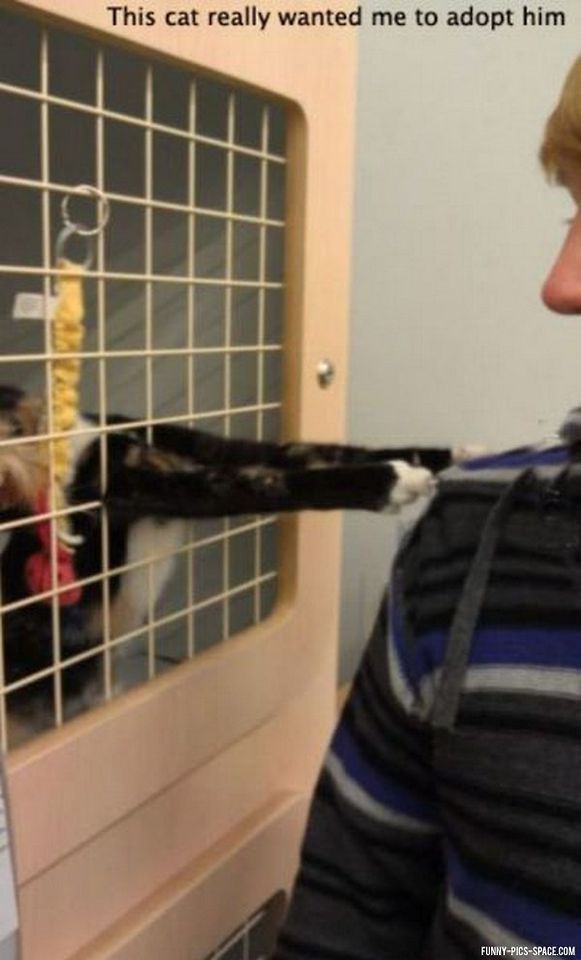

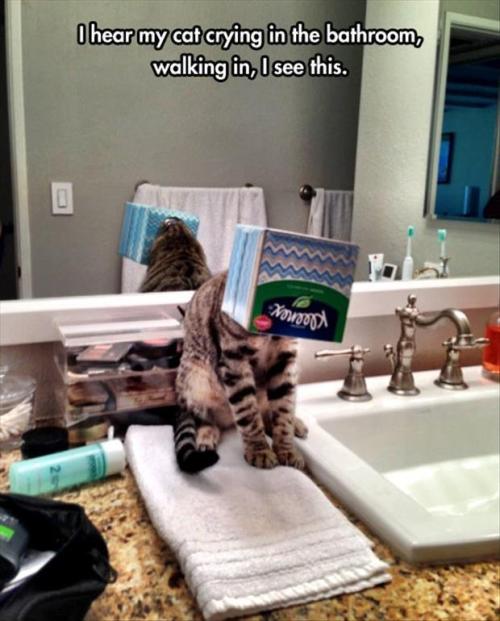
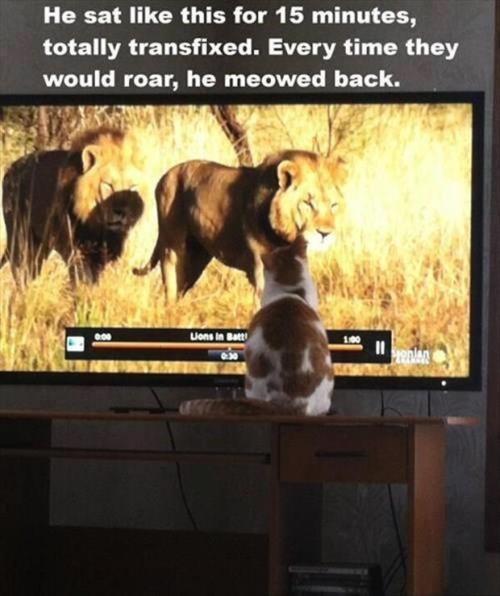
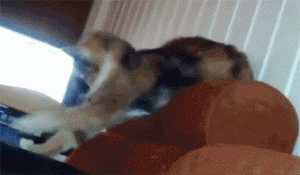
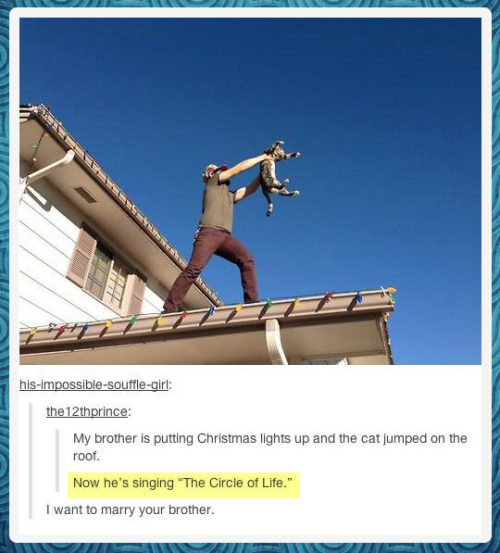
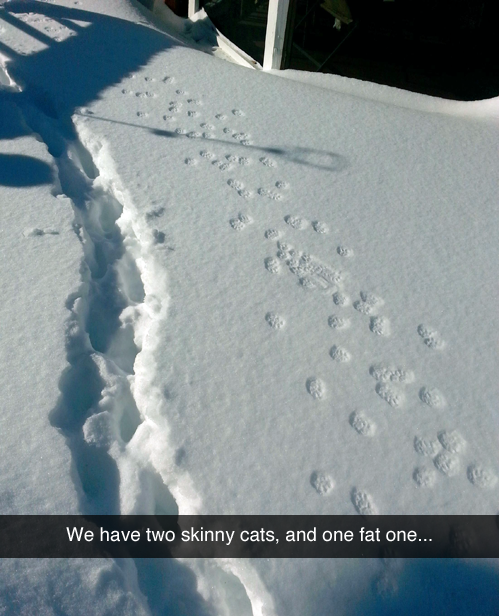
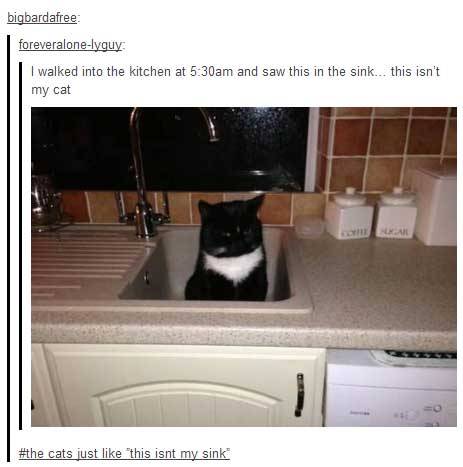
The water doesn't even look real, amazing!

Moss waterfall


“Newt Scamander : “My philosophy is that worrying means you suffer twice.” ― J.K. Rowling, Fantastic Beasts and Where to Find Them: The Original Screenplay
ig: amyyreadz
This is on my wish list of places I hope to visit one day but probably won't get to. Dreams are just Dreams though, until we are able to make them come true.

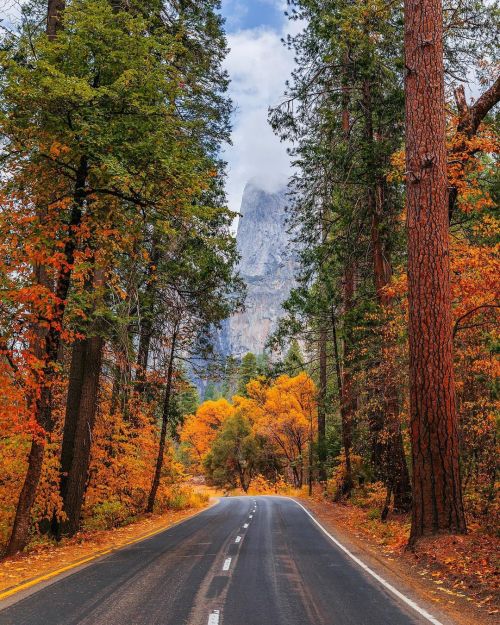
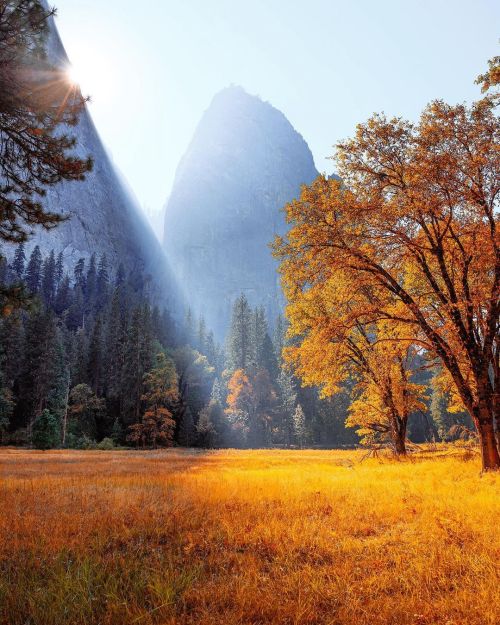
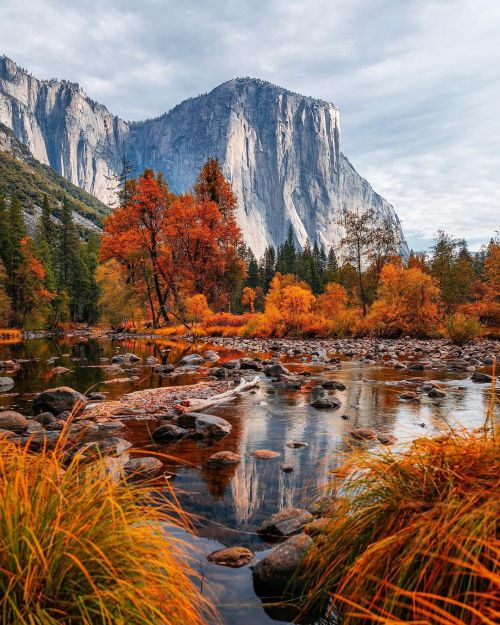
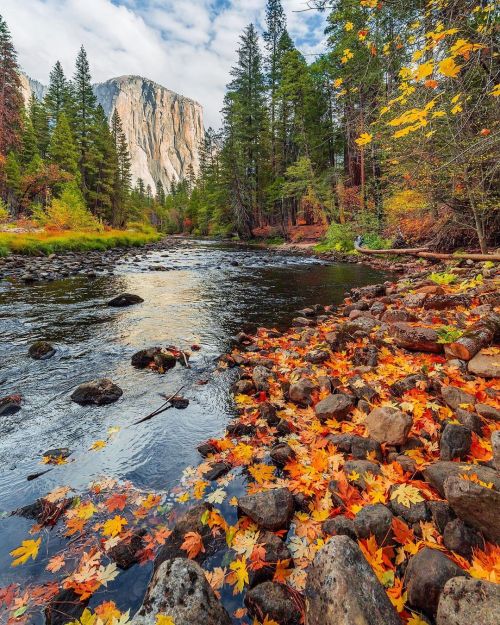
source
-
 omajishans liked this · 3 weeks ago
omajishans liked this · 3 weeks ago -
 writingclinic reblogged this · 1 month ago
writingclinic reblogged this · 1 month ago -
 zaruba-needslove reblogged this · 1 month ago
zaruba-needslove reblogged this · 1 month ago -
 alisannagordn liked this · 1 month ago
alisannagordn liked this · 1 month ago -
 zaruba-needslove liked this · 1 month ago
zaruba-needslove liked this · 1 month ago -
 solthemighty liked this · 1 month ago
solthemighty liked this · 1 month ago -
 maraonthemoor liked this · 2 months ago
maraonthemoor liked this · 2 months ago -
 maudtheempress liked this · 2 months ago
maudtheempress liked this · 2 months ago -
 mishimaayukio liked this · 4 months ago
mishimaayukio liked this · 4 months ago -
 hpfanficwriting reblogged this · 5 months ago
hpfanficwriting reblogged this · 5 months ago -
 ratdaisy liked this · 5 months ago
ratdaisy liked this · 5 months ago -
 ck90 liked this · 7 months ago
ck90 liked this · 7 months ago -
 thoughtfulpatrolbirdl liked this · 8 months ago
thoughtfulpatrolbirdl liked this · 8 months ago -
 itsottoseal liked this · 9 months ago
itsottoseal liked this · 9 months ago -
 merlowee reblogged this · 9 months ago
merlowee reblogged this · 9 months ago -
 ariellewm liked this · 9 months ago
ariellewm liked this · 9 months ago -
 faiths-winter reblogged this · 9 months ago
faiths-winter reblogged this · 9 months ago -
 cholenn liked this · 10 months ago
cholenn liked this · 10 months ago -
 alesandraplesa liked this · 10 months ago
alesandraplesa liked this · 10 months ago -
 kookygobbledygook liked this · 10 months ago
kookygobbledygook liked this · 10 months ago -
 luxaii reblogged this · 10 months ago
luxaii reblogged this · 10 months ago -
 luxaii liked this · 10 months ago
luxaii liked this · 10 months ago -
 napalm-waistcoat liked this · 10 months ago
napalm-waistcoat liked this · 10 months ago -
 cocokappy reblogged this · 11 months ago
cocokappy reblogged this · 11 months ago -
 cocokappy liked this · 11 months ago
cocokappy liked this · 11 months ago -
 dolourstories liked this · 1 year ago
dolourstories liked this · 1 year ago -
 xxhornyxsstuff liked this · 1 year ago
xxhornyxsstuff liked this · 1 year ago -
 merlowee liked this · 1 year ago
merlowee liked this · 1 year ago -
 lovelytaehyungie liked this · 1 year ago
lovelytaehyungie liked this · 1 year ago -
 threetimesmakeshabit reblogged this · 1 year ago
threetimesmakeshabit reblogged this · 1 year ago -
 lily-pad-garden liked this · 1 year ago
lily-pad-garden liked this · 1 year ago -
 tottentz liked this · 1 year ago
tottentz liked this · 1 year ago -
 faeriihearts liked this · 1 year ago
faeriihearts liked this · 1 year ago -
 elmfae liked this · 1 year ago
elmfae liked this · 1 year ago -
 saturnellee liked this · 1 year ago
saturnellee liked this · 1 year ago -
 storylinefanfic liked this · 1 year ago
storylinefanfic liked this · 1 year ago -
 esclarm0nde liked this · 1 year ago
esclarm0nde liked this · 1 year ago -
 yorikvaleigh reblogged this · 1 year ago
yorikvaleigh reblogged this · 1 year ago -
 handlingwelcome liked this · 1 year ago
handlingwelcome liked this · 1 year ago -
 mort-alicious reblogged this · 1 year ago
mort-alicious reblogged this · 1 year ago -
 ranzomiscalling liked this · 1 year ago
ranzomiscalling liked this · 1 year ago -
 poptipkutusu liked this · 1 year ago
poptipkutusu liked this · 1 year ago

-Just Me [In my 30s going on eternity] (A Random Rambling Wordy Nerd and an appreciator of all forms of artistic expression) Being Me- Art, Books, Fantasy, Folklore, Literature, and the Natural World are my Jam.
249 posts